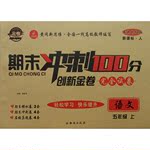题目内容
【题目】阅读理解
A handshake is one of the most common ways to greet others, but US President Donald Trump's unusual method has been put under the microscope lately.
Much like an arm wrestler in a match, the recently-elected leader has a habit of yanking (猛拉) people's hands toward himself during handshakes. And while a typical handshake is only brief, the one between him and Japanese Prime Minister Shinzo Abe on Feb 10 lasted a full 19 seconds.
Simply having a strong hand is not the explanation here. According to Darren Stanton, a body language expert from the UK, while handshakes are usually an exchange of kindness, Trump uses his as a way to show power and control, regardless of how uncomfortable it makes people. “It is as if to say, 'Hey, I'm in charge, don't mess with me,' ” Stanton told The Independent.
Apart from Trump's “yank-shake”, there are other ways people display power with their hands. At business talks or political meetings, for example, some people may rotate (旋转) their wrists during handshakes so that their hand ends up on top instead of underneath. Some may squeeze so hard that it leaves the other person's hand in pain.
According to Stanton, by pulling people into his personal space, Trump is also testing whether they are willing to cooperate with him. “For example, if someone was resistant to being yanked towards him and stood their ground, he would know that he has work to do with them before he got what he wanted,” Stanton told Express.
This is probably why on Feb 13 when Canadian Prime Minister Justin Trudeau visited the White House, all eyes were on how he was going to handle Trump's handshake. Fortunately, Trudeau managed to avoid the embarrassment by grabbing Trump's shoulder to stop himself being pulled in. Afterward, some Twitter users wrote that this proved Trudeau's strong leadership, with one even calling the moment “one of Canada's greatest victories”.
Vice magazine summed up the exchange between the two leaders as: “... no regular handshake. This was the first shot in a bloodless war.”
(1)According to Darren Stanton, Trump uses his “yank-shake” to _____.
a. show his kindness
b. gain control
c. remind people of his status
d. see if people are cooperative
e. get people to lower their guard
A.bcd
B.abc
C.ace
D.bde
(2)The phrase “stood their ground” in Paragraph 5 probably means _____.
A.going ahead
B.standing still
C.turning around
D.pulling out
(3)According to the text, the way Trudeau reacted to Trump's handshake _____.
A.annoyed Trump
B.displayed his power
C.was considered rude
D.was likely to start a war
(4)What can be concluded from the text?
A.Some people spin their wrists during handshakes to show extra respect.
B.Handshakes are the most preferable way for political leaders to greet others.
C.The way someone shakes another person's hand can have different meanings.
D.The longer two people shake their hands, the better their relationship is.
【答案】
(1)A
(2)B
(3)B
(4)C
【解析】本文为介绍说明文。文章介绍了美国总统唐纳德特朗普与众不同的握手方式,及各种握手方式所暗含的寓意。
(1)细节理解题。根据第三段中的Trump uses his as a way to show power and control, regardless of how uncomfortable it makes people.及第五段中的Trump is also testing whether they are willing to cooperate with him.可知,特朗普使用“猛拽式握手”方式向人们展示他的权力和控制欲以及来试探这些人是否愿意和自己合作。故选A。
(2)词义猜测题。根据第五段中的For example, if someone was resistant to being yanked towards him(例如,如果某人被拽向他时显得勉强)可推知,被拽的人stood their ground意为“站再原地不动”。故选B。
(3)推理判断题。根据倒数第二段中的Afterward, some Twitter users wrote that this proved Trudeau's strong leadership, with one even calling the moment “one of Canada's greatest victories”.(随后,一些特推用户发推称此举体现了特鲁多强大的领导力,甚至有人将这一时刻称为“加拿大最伟大的胜利之一”)可推知,特鲁多对特朗普握手方式的反应展示了他的权力。故选B。
(4)推理判断题。根据第四段中的Apart from Trump's “yank-shake”, there are other ways people display power with their hands.(除了特朗普的“猛拽式握手”之外,人们还会通过其他的方式用手来展示其权威)及文章对握手方式的陈述可推知,人们握别人手的方式可能有不同的含义。故选C。

 期末冲刺100分创新金卷完全试卷系列答案
期末冲刺100分创新金卷完全试卷系列答案